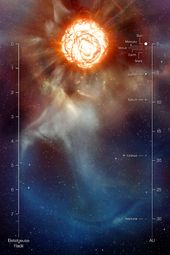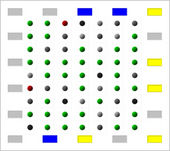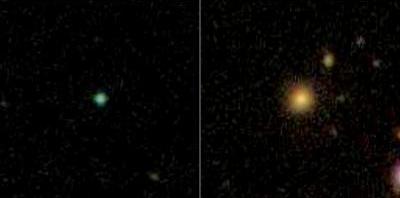
Red supergiants still hold several unsolved mysteries. One of them is just how these behemoths shed such tremendous quantities of material -- about the mass of the Sun -- in only 10 000 years. Two teams of astronomers have used ESO's Very Large Telescope (VLT) and the most advanced technologies to take a closer look at the gigantic star. Their combined work suggests that an answer to the long-open mass-loss question may well be at hand.
The first team used the adaptive optics instrument, NACO, combined with a so-called "lucky imaging" technique, to obtain the sharpest ever image of Betelgeuse, even with Earth's turbulent, image-distorting atmosphere in the way. With lucky imaging, only the very sharpest exposures are chosen and then combined to form an image much sharper than a single, longer exposure would be.











